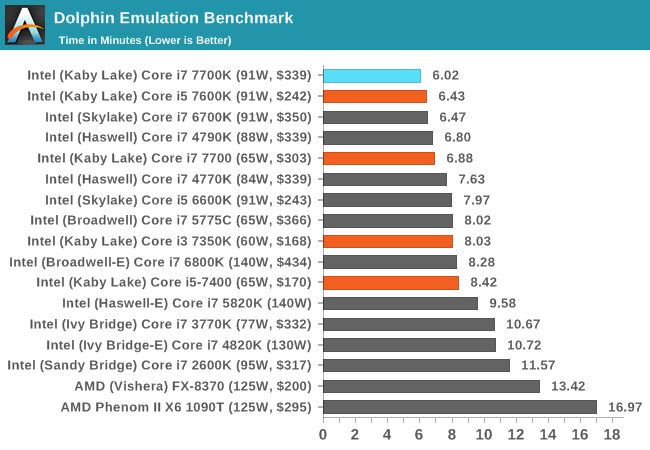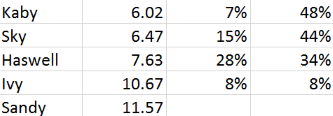Intel has finally gotten the performance up enough with their latest “Tock” for me to upgrade the Core i7-3770K system I built way back in 2012. As part of that tiny segment of hardcore flight sim fans, I still have stuff that can benefit from a CPU boost, but all the way up through SkyLake the extra perf wasn’t enough over my 4.5-year-old system to warrant an upgrade.
The extra 15-30% on Kaby Lake, added to the previous incremental upgrades, means I might see a realistic improvement in overall performance. Plus some of the upcoming enhancements like Intel Optane seem interesting.
Also, my f*#$@ing Oculus software will stop bitching about my CPU, despite it being faster in real life than their minimum spec CPU. :)
So reading what’s out there today, looks like I’ll be going for the:
- Core i7-7700K
- Asus Strix 270E Gaming motherboard
- 32GB of DDR4/2133 RAM
- Some kind of bigass M.2 SSD, since 1TB M.2s are now in the under-$300 range.
- GTX 1080, drives, and power supply from my existing rig
On the case… I need to research what’s out there now, but it looks like the Corsair Carbide Air 540 would be easier to work in than my old traditional Antec. (Antec is a nice, quiet case, but too tight for the GTX 1080 and other stuff I have crammed it in after years of upgrades.)
On the M.2 SSD front, I know the Samsung 860 is the top performer, but looking at the current selection of 960GB-1TB M.2 SSDs on Amazon, I can get something like a Crucial, WD, or SanDisk for a fraction of the price, and I imagine the real-world difference will be pretty insignificant. Certainly not a big enough difference to warrant more than double the price! I considered making this my first spinning-drive-free system, but I’ll throw in one of the big drives I pulled from my retired Media Center PC just so I can keep easily create and keep additional backups of all my music, photos, and videos there in case the other family desktop, our productivity system, craps out.
From looking at the motherboard, looks like power supplies mercifully haven’t added new connectors in the past five years, so I should be good with my old Corsair 80+ Gold 800W overkill supply.
Man. I remember when I used to change graphics cards yearly and motherboards every two years and every generation was a huge improvement. And they wonder why the PC market has slowed down…

